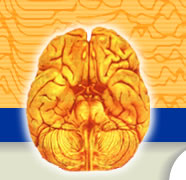|
|

RESEARCH ON TRANSCENDENTAL CONSCIOUSNESS
The Effects Of The
Transcendental Meditation Technique
On The Temporal And Spatial Mapping
Of The Brain—A MEG Study
Abstract
Previous research has suggested that a unique “fourth state” of awareness, Transcendental Consciousness (TC), distinct from waking, dreaming, and sleeping, occurs during the practice of the Transcendental Meditation technique. Subjectively, this state has been described as free of mental content but with alert, broaden awareness. Objectively, this state has been characterized, in part, by very high levels of short- and long-range EEG (electroencephalographic) coherence along with spontaneous respiratory “suspension” and phasic adjustments of various autonomic variables. Research also suggests that brain rhythms centered on 40 Hz may participate in the mechanics of temporal binding of diverse brain activity underlying the content and unity of cognitive experience. This proposed study is designed to help clarify the unique nature of this state of TC and its relationship to 40 Hz rhythms using a multichannel magnetoencephalography (MEG) and electroencephalography (EEG) system. This meditative state (TC) is predicted to be (1) distinct from all three other states of awareness in the appearance of high levels of broadly distributed, phase-coherent MEG and EEG activity, in particular, 40 Hz oscillations, suggesting a higher degree of global brain integration and the presence of cognitive experience; and (2) distinct from the waking or dreaming states of consciousness in its lack of “resetting” of the 40 Hz oscillations reported by Llinas and Ribary (1993)—either 40 Hz reset to external evoked stimuli as in waking state, or to spontaneous, endogenous stimuli as in REM state.
|
